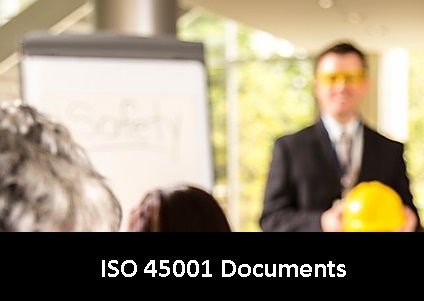In ISO 45001 Awareness Training, as with all management system standards, it is critical to ensure that your employees are trained and aware of what they need to do to support the occupational health and safety management system. In earlier post we discussed what ISO 45001 documents to be required and how you can use this as a way to drive your Occupational Health & Safety (OH&S) management system, employee feedback, and continual improvement. Here, I will look at two more aspects of awareness training: how to train and what to train.
The ISO 45001 Awareness and Auditor Training Presentation Kit is helpful for companies who want to conduct in-house awareness and certified internal auditor course for OH&S management system.
What OH&S management system awareness training is needed?
In essence, you need to provide the ISO 45001 awareness training necessary for an employee to safely perform the tasks that are required to do the assigned job, and you must define this training for each job in your company. What the OH&S policy and objectives are that affect their job. This means knowing what they do that affects the ability of the company to meet the policy and objectives.
- Their contribution to the OH&S management system. Employees must know their policies and procedures for OH&S and understand how following these requirements keeps them safe. This also includes the benefits of an improved OH&S performance in the workplace.
- Potential consequences of departing from procedures and not conforming to the OH&S management system requirements: It is not enough that employees know that a procedure exists, but they need to know what will happen if it is not followed. Compliance with a procedure will then make sense to the employee.
- Relevant past incidents: If an incident occurred that could affect how the employee does their job, it is expected that they will understand what happened and the outcomes of the investigation.
- OH&S hazards and risks relevant to their jobs: This is where you need to make employees knowledgeable of the hazards and risks associated with their jobs and how their behavior impacts these hazards and risks. Employees must know what they must do in their jobs when it comes to health & safety. Not knowing the risks is one of the greatest problems, and is how tragedy occurs.
- The ability to remove themselves from unsafe situations: Employees must know that it is acceptable to stop working when it is not safe to do so. If their health & safety is in imminent danger they need to understand how they can stop and have this corrected.


